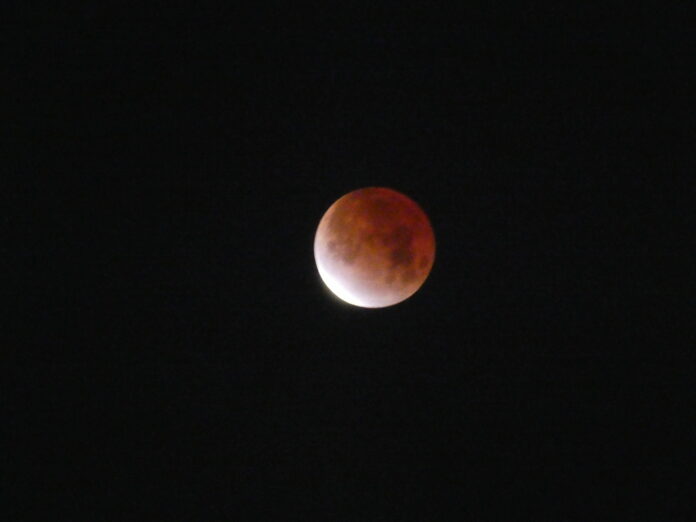A blood red moon appeared early morning Nov. 19
By LEVI GOLDSTEIN — city@theaggie.org
Last week, students gathered outside to watch a nearly total lunar eclipse that was visible from all of Davis.
The eclipse began at 11:19 p.m. on Nov. 18, peaked at 1:03 a.m. on Nov. 19 and ended at 2:47 a.m. At about three and a half hours long, it was the longest lunar eclipse since 1440. There will not be one longer until 2669.
It could be seen from all of North America and South America, most of Europe, most of Asia, Australia and North and West Africa, according to TimeandDate.com. Ninety-seven point four percent of the moon’s surface was eclipsed.
The moon goes through a series of light phases because the moon orbits the Earth and the Earth orbits the sun, according to NASA’s Solar System Exploration website. The moon is always reflecting the sun’s light on half of its surface, but how much we can see from Earth changes over the course of the moon’s orbit. The cycle of phases repeats every 29.5 days.
The Earth always casts a shadow in space opposite the sun. Lunar eclipses occur when the sun and the moon are on opposite sides of the Earth and a full moon passes through the Earth’s shadow.
This can only happen twice a year when the moon’s orbital path and the Earth’s orbital path intersect, according to Vinita Domier, the coordinator of the Davis Astronomy Club and a board member of the Explorit Science Center in Davis. Because the moon’s orbit around the Earth is tilted about five degrees with respect to the Earth’s orbit around the sun, for most full moons during the year, the moon will pass under or over the Earth’s shadow instead of through it.
Total and nearly partial lunar eclipses often look red in color, which is why they are known as blood moons.
“Depending on the atmospheric conditions, [the moon] can be very dark red to pretty bright red,” Domier said. “The sunlight going through Earth’s atmosphere gets refracted, and the blues sort of get scattered. Only the reddish part of the sunlight spectrum gets reflected off the moon. So the moon looks rather reddish when it’s eclipsed.”
Domier has always had a love for science, but her interest in astronomy was solidified when she took an astronomy course as an undergraduate at UCLA. She and her husband took over the Davis Astronomy Club when the founder, Dennis Smith, passed away.
“There’s an amazing amount of wonder and beauty in the night sky,” Domier said. “The idea is to get people to get excited about observational astronomy.”
The Club operates out of the Explorit Science Center. It often uses Explorit classrooms and meets outside of the building to observe objects and events in space with telescopes owned by club members.
Explorit is an old ranch house repurposed in the late 1980’s into a museum and educational center. It frequently hosts school field trips and offers a variety of hands-on exhibits and events. On Oct. 1, Explorit held a post-quarantine grand reopening with a revamped interior and new staff members and volunteers.
Lunar eclipses are usually followed by solar eclipses about two weeks later. The next eclipse will be a total solar eclipse on Dec. 4 that will only be visible in the Southern Hemisphere, according to TimeandDate.com. The next eclipse that can be seen in Davis will be a total lunar eclipse on May 15, 2022.
Written by: Levi Goldstein — city@theaggie.org




